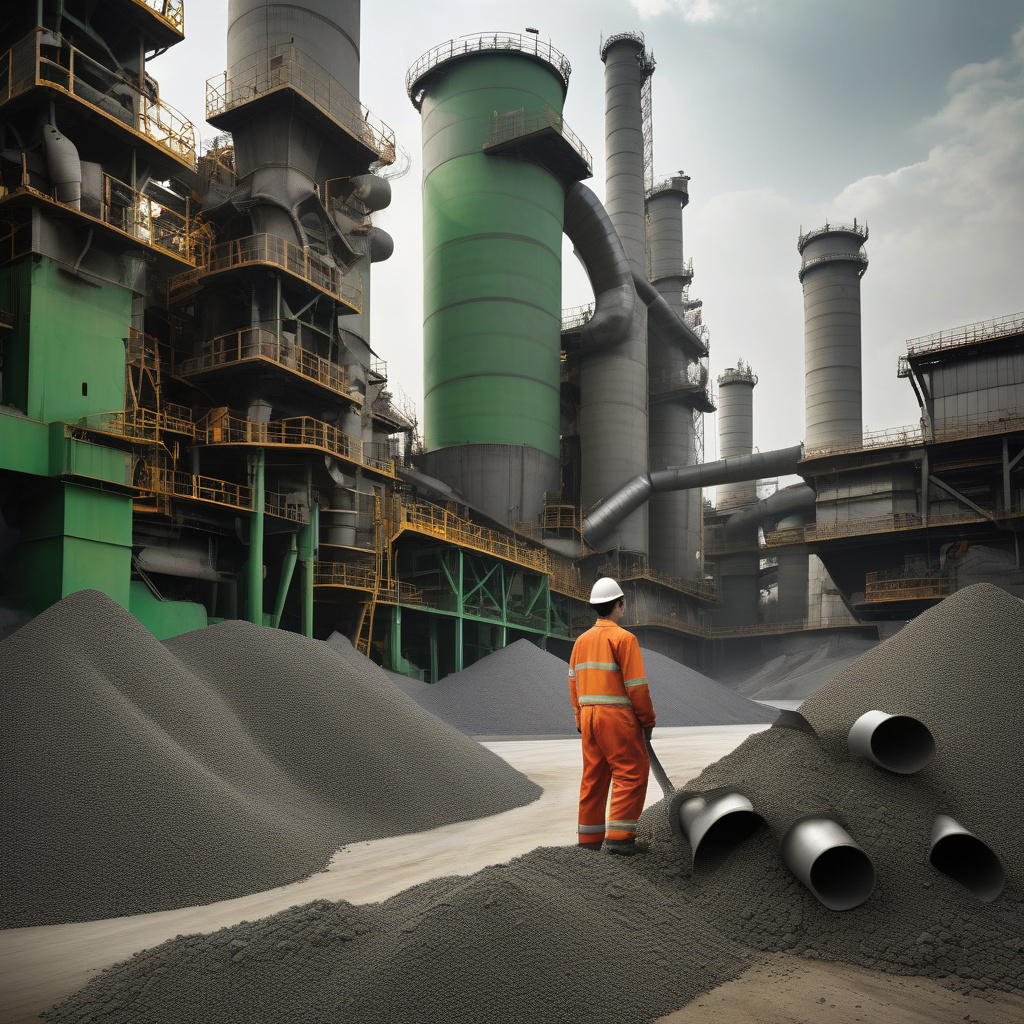Steel Waste, Methane Drive 80% Drop in Cement Emissions in China, Study Reveals
Chinese experts have made a groundbreaking move to decarbonize one of the world’s most emissions-heavy industries – cement production. By utilizing steel waste and harnessing methane, they have achieved an impressive 80% reduction in emissions, setting a new standard for sustainable practices in manufacturing.
Cement production is notorious for its high carbon footprint, accounting for approximately 8% of global CO2 emissions. China, as the largest producer of cement in the world, has been under pressure to address this issue and seek innovative solutions to reduce its environmental impact.
A recent study conducted by a team of researchers in China has demonstrated the effectiveness of incorporating steel slag, a byproduct of steel production, into the cement manufacturing process. By replacing a portion of the traditional clinker with steel slag, the researchers were able to significantly decrease the amount of CO2 released during production.
Furthermore, the researchers implemented a novel approach to utilize methane gas in the production process. Methane, a potent greenhouse gas with a much higher warming potential than CO2, is commonly emitted from landfills and industrial facilities. By capturing and utilizing methane as a source of energy in cement production, the researchers not only reduced emissions but also mitigated the release of a harmful gas into the atmosphere.
The combination of these two strategies – incorporating steel waste and harnessing methane – resulted in an unprecedented 80% drop in emissions from the cement production process. This achievement marks a significant milestone in the global effort to decarbonize industries and combat climate change.
The success of this initiative in China underscores the importance of investing in research and innovation to develop sustainable practices in manufacturing. By leveraging alternative materials and renewable energy sources, industries can significantly reduce their environmental impact without compromising efficiency or quality.
As the world continues to grapple with the challenges of climate change, the example set by Chinese experts in the cement industry serves as a beacon of hope. It demonstrates that with determination, ingenuity, and collaboration, we can pave the way for a more sustainable future for generations to come.
In conclusion, the utilization of steel waste and methane to drive an 80% reduction in cement emissions in China is a remarkable achievement that showcases the transformative power of sustainable practices in industry. By prioritizing innovation and environmental stewardship, we can pave the way for a greener, cleaner future.
steel waste, methane, cement emissions, China, sustainable practices












